- E1 is the European standard for telephony and data of 2.048Mbps which came out after the T1 std. which is 32 time slots of 64kbps
- T1 (or DS1) is the North America standard data rate of 1.544 Mbps which contains 24 channels of 64kbps Data Stream or Telephony has historically been sent over Unshielded Twisted Pairs, UTP or shielded twisted pairs STP with a Manchester BiPhase baseband signal with a center bit clock edge.
There are many variables that affect signal integrity;
- Data edge rise time and over/undershoot
- 1T clock over/undershoot and plateau
- 2T clock over/undershoot and plateau
- clock edge lag/lead skew compensation
- data ISI precompensation and waveshape control
- Impedance attenuation pad for 50, 75, 125 Ohm
- cable impedance DM and CM
- differential mode, DM and single end termination ( CM) at Tx/Rx
- etc
It is somewhere in the last 3 items that this repeater can hard-select these options that depend on the type of cable and distance used.
So the S may refer to the type of transmission line and impedance matching options required. S for shielded or S for Single ended Source termination for each differential line. This requires training and consulting with tech support.
Side Notes
To give you an idea on the critical software controlled attributes of the Line Interface Unit (LIU), it has "Line Buildout" digital options (read ...transmission frequency and delay dependent parameters) with transmit signal control over many parameters of time and amplitude of each pulse. (i.e. it's not like RS485 which just sends out a simple pulse. )
Here are some pulse options by software controlled registers for the DAC output which are done after the attenutator impedance matching options in this question are set.


Each of these are designed to conjugate the impedance vs freq. and time mismatches in the transmission line and can extend the distance at an acceptable bit error rate(BER).


